Crisscrossing the land on this hilltop are several roads to nowhere. They are the vestiges of old rural lanes that once connected farms and hamlets to villages. A few of these paths still lead from one place to another, but most of them were chopped up a century ago and have fallen into abandon.
My favorite path has an intersection at our front gate. Like the scarecrow’s choice, from this point you can meander south along the ridge, east down to the stream, or north to the river. Or rather, one could a hundred years ago. You wouldn’t know you’re on a thoroughfare today, you’re standing at our crumbling asphalt driveway.
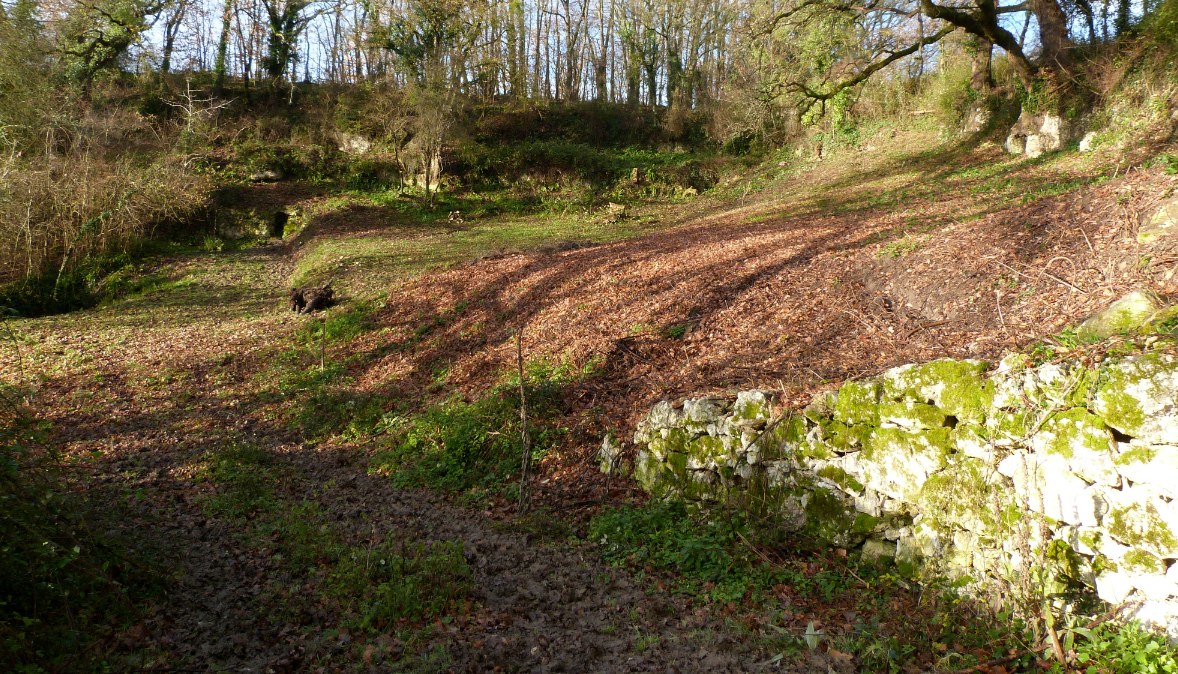
Today I’m setting off on the eastern path in the forest. The air is redolent of rain and the perfume of decaying oak leaves as they become soil. The dog surprises a hare and a deer who bound away so fast all I catch are the flash and bounce of white tails. Then it’s silent again. The ground is spongy under my feet and that same, unmistakable quiver rises from the earth. We are not alone.
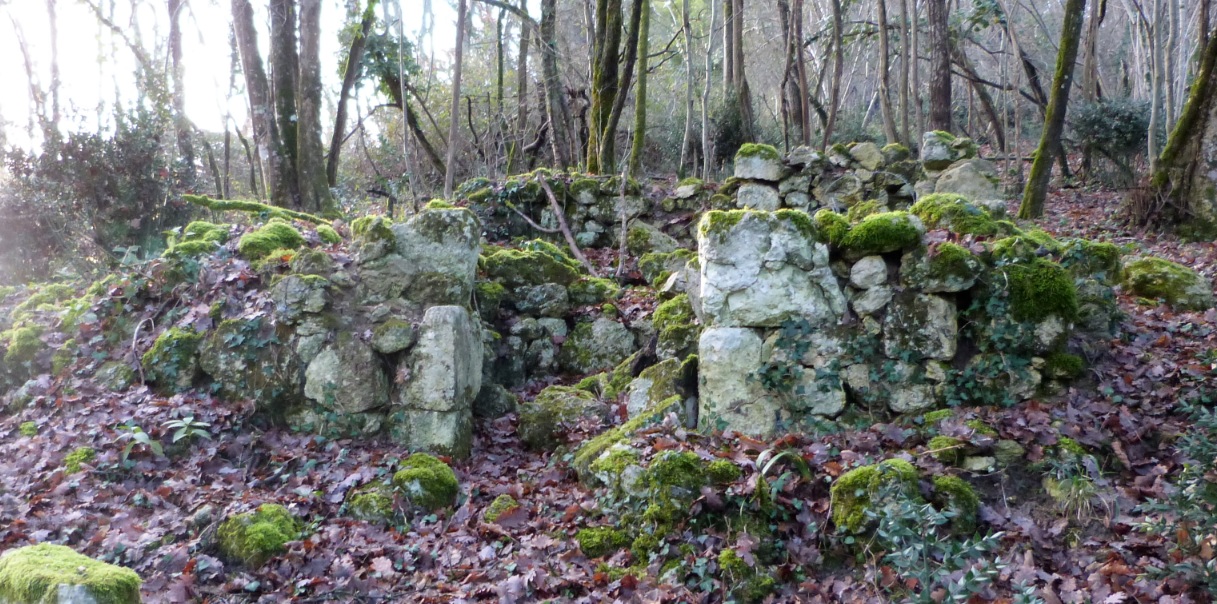
Everywhere are secret clues just below the surface. Everywhere is evidence of other lives and times. In places you can see the carefully hand-built rock supports of the old cart roads. Over there are the remains of a shepherd’s shelter, the stones now in disarray and covered with moss.
Beyond the woods there is another old chemin, smothered by brambles. Another road to nowhere; it begins and ends in the middle of our pasture. This is where we’ll meet the surveyor next week to establish markers and pay the town for the right to put the trail back in order.
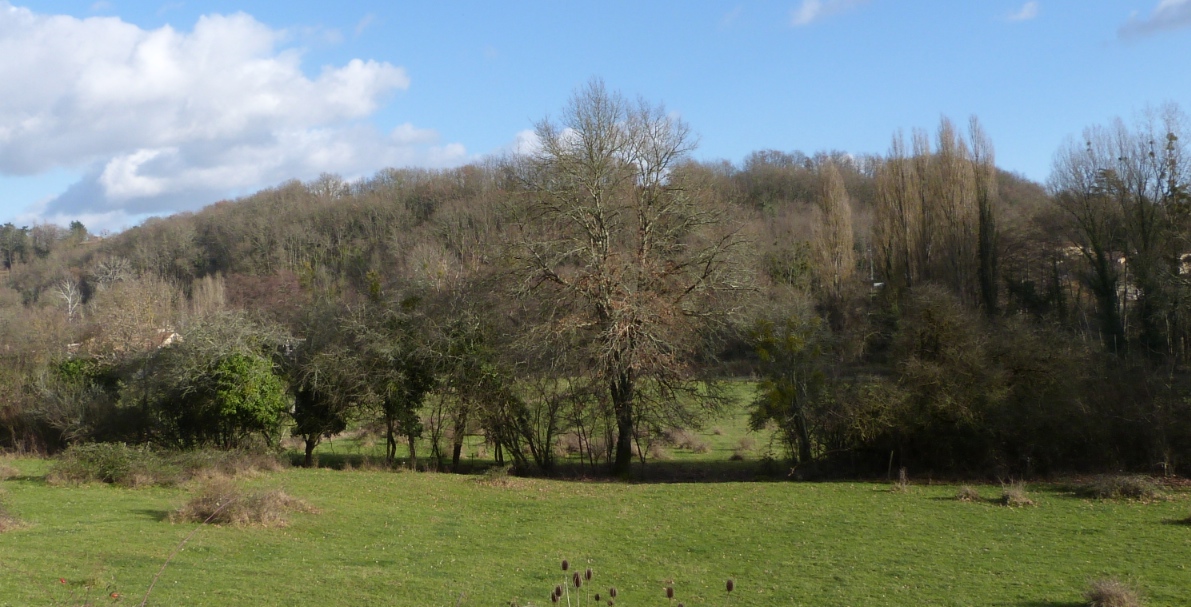
A Napoleonic map from 1837 shows what the land looked like nearly 200 years ago. The old Roman Road comes in from the south. Land use of each parcel is noted (“terre, vin, bois…”). Most of today’s woods were vineyard then. We assume the vines were decimated by phylloxera in the 1870’s and never replanted. The chemins are noted with decorative squiggles, probably designating hedges.
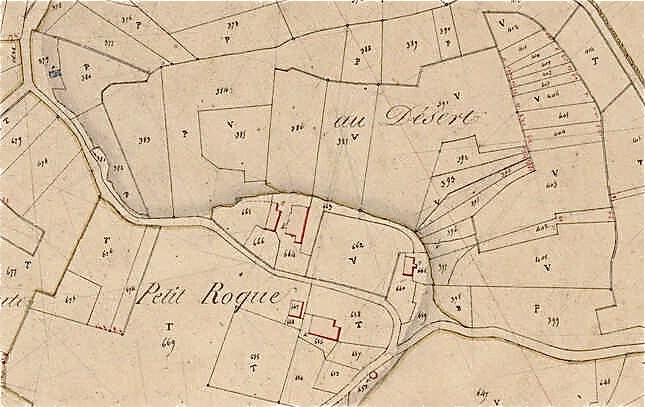
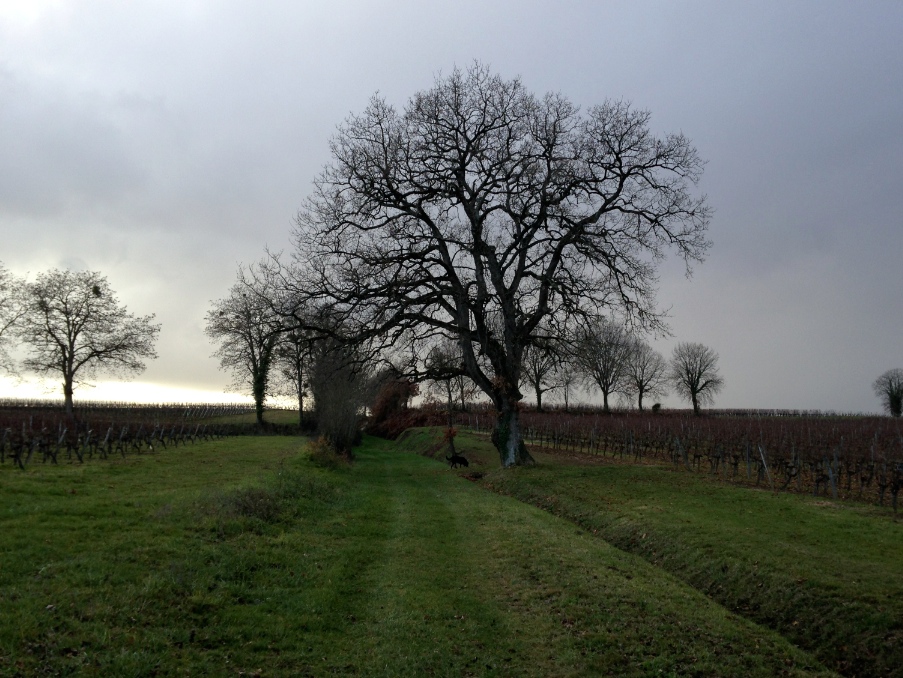
Missing is the modern road that was created by dynamite in 1895. The explosion cleaved a cliff, and thus cleaved the parcel called “Au Desert.” The biblical reference is deliberate; it designates a gathering site of Protestants for sermons during the centuries of their persecution. If you close your eyes and erase the 1895 road, you can see this vast sloping hillside and valley as it was then – a lush green amphitheatre with cliffs to magnify the speaker’s voice and a natural curve to accommodate the faithful.
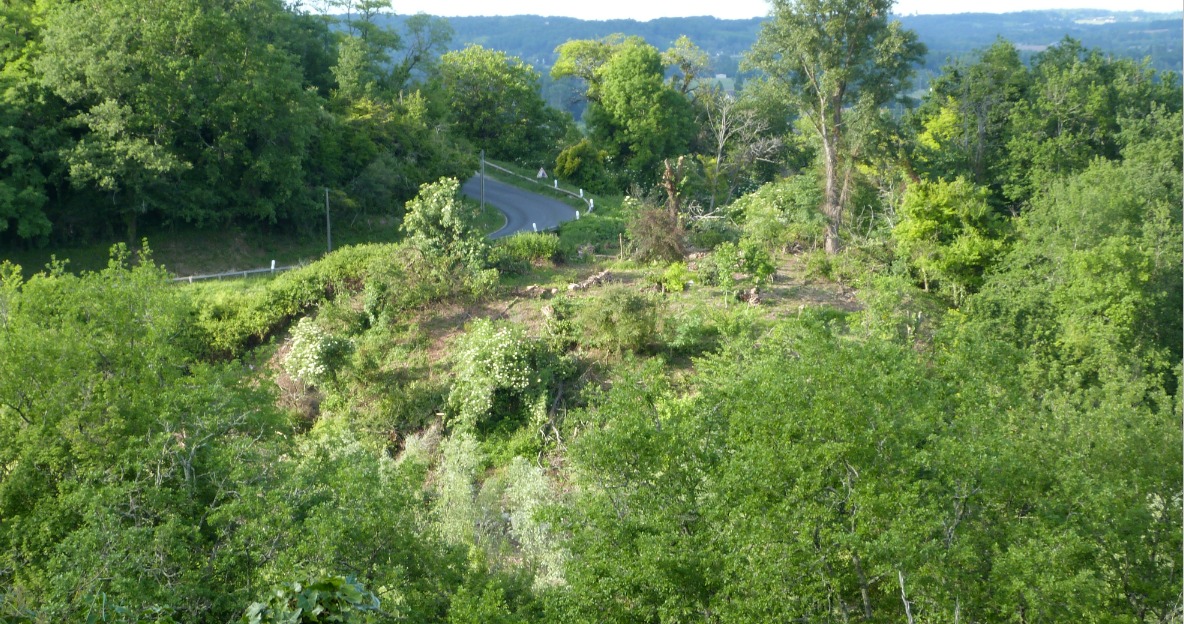
Apparently places propitious to the sacred are not chosen haphazardly. (Think of Chartres Cathedral, built on the site of Druidic, then Gallo-Roman shrines.) Our local historian showed me excerpts from a 1896 book that describes the vestiges of a Roman shrine here, where the “Desert” meets the cliff. At dawn on the Summer Solstice it is in perfect alignment with the rising sun. Dedicated to Dionysus (wine country even then) this shrine was itself built on the site of a Druidic altar….
Almost all destroyed went “the road” of 1895 * came in.
But it’s unfair to shamelessly decry destruction when we’ve been agents of our own. This became quite evident when we received a visit from a woman who lived here in the 1930’s – child of tenant farmers, born under this roof, returned 90 years later to look for her home.
First she exclaimed nothing was recognizable. Gone the chicken coop. Gone the pig sty. Gone the view-blocking hedge on the cliff. Hers was a house with a dirt floor, no running water, no electricity. Then, in our walkabout, little signs began to speak: the particularities of the stone walls, the old bread oven, scorch marks from a fire, the original fireplace “where Maman bathed us once a week if she wasn’t too tired to go down in the woods for water.” We were delighted by her tales of John’s great-uncle Patrice who we never knew; she remembered their mother’s gratitude, for he replaced the dirt floors when a baby was born.
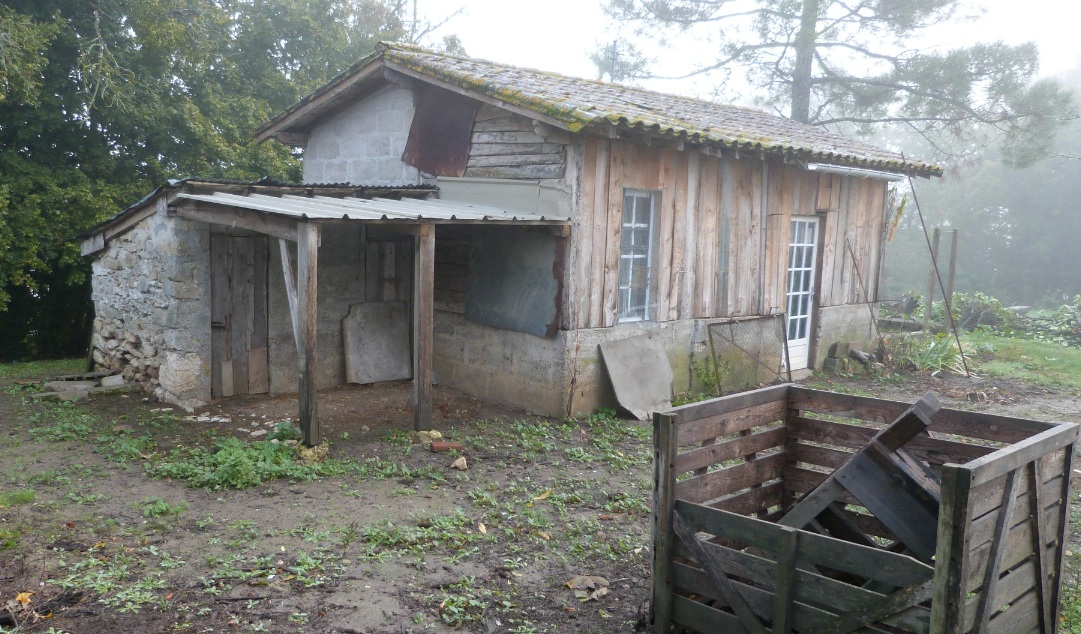
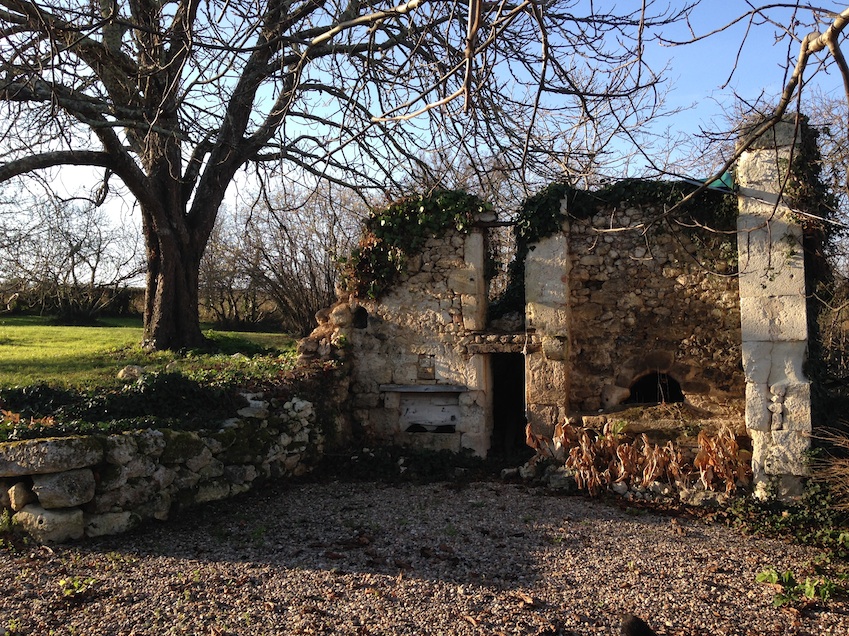
She continued searching for clues, inside and out, until finally she found “the path,” marked by a very old oak. The path I’m walking now. She described herself as a seven-year-old on this spot, coming home from school alone, for “Maman was too busy in the fields to fetch me.” Winter she wet her pants for fear of wolves. Springtime she picked flowers.
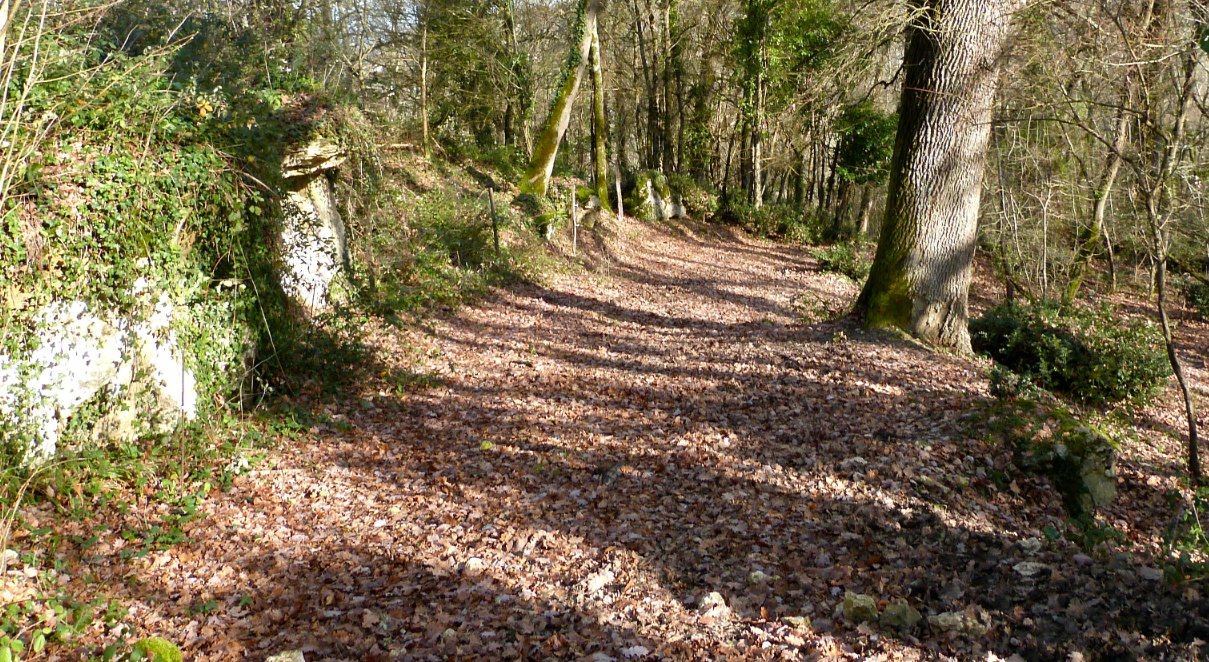
Now she is part of my community of people from the past who shaped this land. Lived off its fruits, left their signatures behind. They are the entities who whisper through silent frissons as I walk the old paths. Always the same message: “We were once like you. We thought this would last forever.”
If it’s true that Time is a “construction,” and that all times are present in the present, and that the present is all that really exists, then I’m not crazy. They’re here.
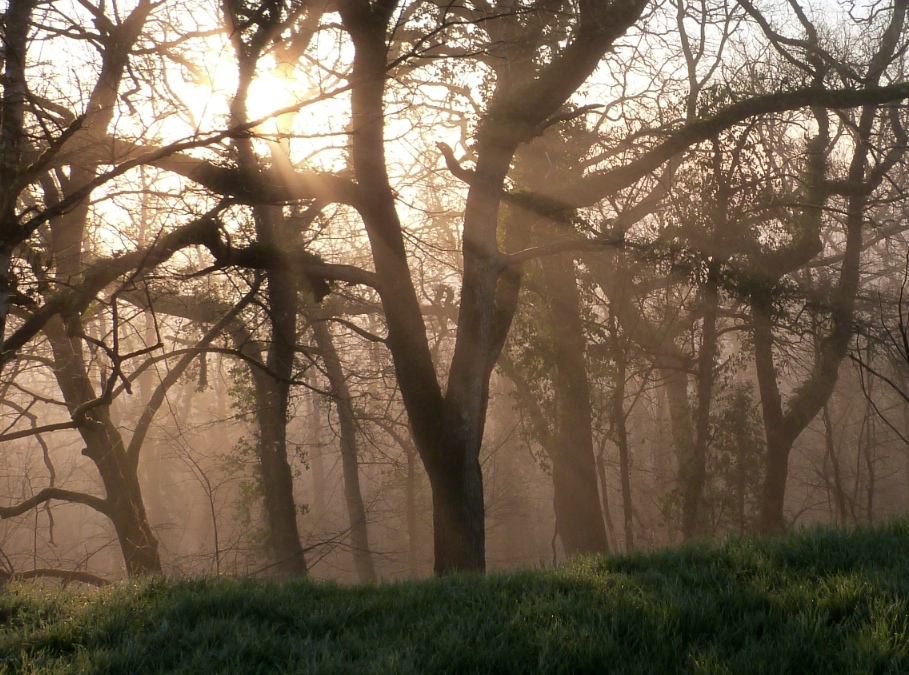
* From “Les Pierres et L’Histoire” 1896 by J.V. Monbarlet (of St. Seurin de Prats):
“The explosion destroyed the carvings of two of the most characteristic figures of the “Sanctuaire du Désert… One was the head of a bull; the other was the figure of a smiling woman… Her sympathetic smile will never again greet the traveler coming down the path… We condemn this act of vandalism.”
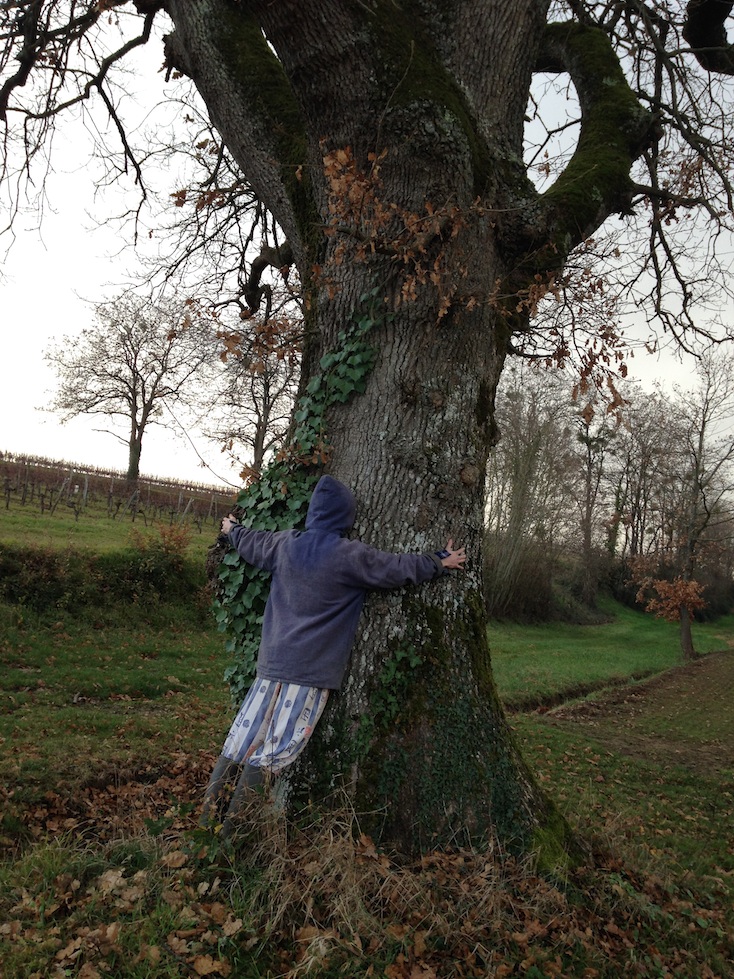
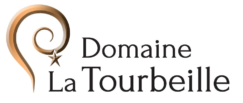
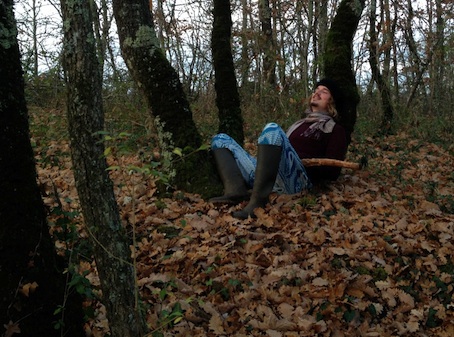



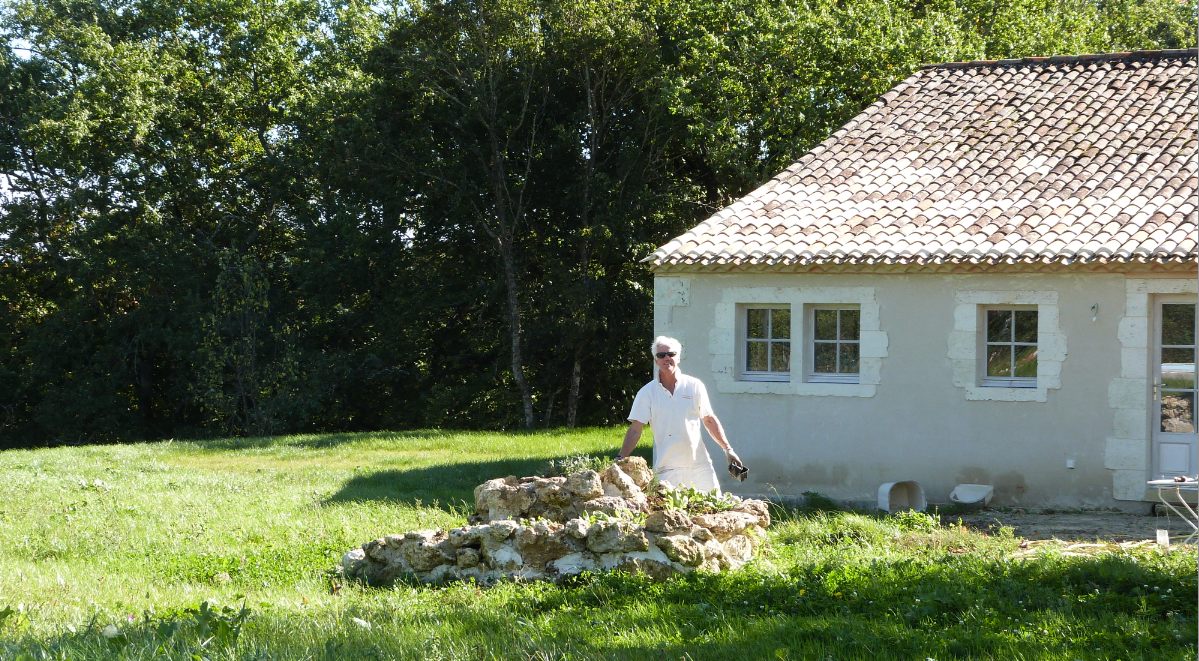
5 thoughts on “Parallel Lives”
Oh Mary, I love this. I want to hear more when I see you.
I love your connection to the physical and cultural landscape. I had wrongly assumed that most of this was lost when the main house was sold. In my mind I am walking the paths of my childhood neighboring woods. Amazing how clear it all is in my head.
What might have been and what has been
Point to one end, which is always present.
Footfalls echo in the memory
Down the passage which we did not take
Towards the door we never opened
Into the rose-garden. My words echo
Thus, in your mind.
T.S.Eliot, The Four Quartets
What a marvelous account of past times! My hope is to walk some of the paths with you. Let’s stay in touch!.
Just wonderful, Mary. xx